Unifying Lean-Agile and DevOps for Perfect Software Delivery
Table of Contents
Introduction:
Lean-Agile concepts combined with DevOps approaches have shown to be a potent mix that offers a comprehensive way to improve collaboration, expedite the delivery of high-quality software, and simplify procedures. Organizations are continuously looking for approaches that not only promote agility but also improve the whole software delivery pipeline in the ever-changing field of software development. This blog examines how Lean-Agile and DevOps work well together and how this convergence is changing the way that software is developed.
Section 1: Understanding Lean-Agile and DevOps
1.1 Introduction to Lean-Agile:
Lean-Ajson and Agile approach is a way to implement methodologies with their targeted priorities. The Lean-Agile methodology is based on the same concepts that were taken from Toyota’s production line, extending agility of Agile methodologies to enterprise level. This leads to provide value to customer according to them, improving continuously, and meeting any needs that may change.
1.2 Key Lean-Agile Principles:
a. Customer Value: At the core of Lean-Agile is an unwavering commitment to delivering value to the customer. Every activity and decision is centered around understanding and prioritizing what matters most to the end-user.
b. Continuous Improvement: Building on the Lean philosophy, Lean-Agile encourages a culture of continuous improvement. Teams are empowered to reflect on their processes regularly, identify areas for enhancement, and implement changes incrementally.
c. Adaptability and Flexibility: In a rapidly changing business environment, Lean-Agile places a premium on adaptability. The framework favors responding to change over rigidly adhering to plans, enabling organizations to navigate uncertainties with agility.
1.3 Introduction to DevOps:
The term “DevOps,” which is a portmanteau for “development and operations,” refers to a collaborative technological and cultural approach that aims to eliminate silos between IT operations and development. By implementing process automation, encouraging shared duties, and coordinating the objectives of development and operations teams, DevOps seeks to improve teamwork, communication, and productivity.
1.4 Core DevOps Principles:
a. Automation: Automation is a cornerstone of DevOps practices. By automating repetitive tasks, such as code deployment, testing, and infrastructure provisioning, DevOps accelerates the software development lifecycle and minimizes manual errors.
b. Collaboration: DevOps emphasizes collaboration and open communication between development, operations, and other stakeholders. Breaking down silos ensures a shared understanding of goals and accelerates issue resolution.
c. Continuous Integration and Continuous Delivery (CI/CD): CI/CD practices enable developers to frequently integrate code changes and deliver software continuously. This not only accelerates the release cycle but also ensures a more reliable and predictable delivery process.
1.5 Synergies between Lean-Agile and DevOps:
Fundamental ideas like a focus on customer value, continuous improvement, and flexibility are shared by both Lean-Agile and DevOps. By combining these two frameworks, a synergistic method covering the whole software development and delivery lifecycle is produced. While DevOps provides the tactical and technical methods required for flawless execution, Lean-Agile delivers an organizational and strategic viewpoint.
1.6 Aligning Goals for Business Success:
Lean-Agile and DevOps converge in their shared goal of delivering high-quality software efficiently and continuously. While Lean-Agile establishes a strategic framework for organizational agility, DevOps operationalizes these principles, ensuring that development and operations teams collaborate harmoniously to achieve business objectives. The alignment of these goals is crucial for organizations seeking a holistic approach to navigate the complexities of modern software development and delivery.
Section 2: The Convergence of Lean-Agile and DevOps
2.1 Recognizing the Need for Convergence:
As organizations strive to enhance their software development and delivery capabilities, the convergence of Lean-Agile and DevOps emerges as a strategic imperative. The need for a seamless flow from ideation to deployment necessitates a marriage of Lean-Agile’s organizational agility with DevOps’ technical practices. This recognition underscores the importance of breaking down silos not only within teams but across the entire value stream.
2.2 Shared Principles and Objectives:
The Lean-Ajson. Argument Base towards immunity for the data objectives between two tasks versions. The said two frameworks have their focus on how the customers’ demands to be fulfilled, and how they can improvise efficiency levels. Organizations can create efficient pipelines running strategic guidance and tactical executions by aligning these principles.
2.3 Bridging the Gap between Development and Operations:
The traditional gap between development and operations, often characterized by friction and miscommunication, is effectively bridged through the convergence of Lean-Agile and DevOps. DevOps practices break down the barriers, fostering a collaborative environment where development and operations teams work cohesively to achieve common goals.
2.4 Incorporating DevOps into Lean-Agile Frameworks:
To achieve this convergence, organizations adopting Lean-Agile frameworks, such as SAFe (Scaled Agile Framework), increasingly incorporate DevOps practices. This integration enhances the ability to scale Agile methodologies beyond individual teams, ensuring a consistent and efficient flow of work from concept to deployment.
2.5 Common Focus on Value Delivery:
The constant emphasis on value delivery is at the core of both Lean-Agile and DevOps. From a strategic standpoint, Lean-Agile tackles this by making sure that processes and organizational structures are in sync to yield optimal value. In contrast, DevOps makes this operational through process automation, continuous integration, and a more efficient production workflow.
2.6 The Role of Automation in Convergence:
Automation serves as a linchpin in the convergence of Lean-Agile and DevOps. From automated testing and continuous integration to infrastructure as code, automation accelerates the delivery pipeline. This shared emphasis on automation ensures not only speed but also reliability and consistency in the software delivery process.
2.7 Continuous Feedback Loops:
The convergence of Lean-Agile and DevOps emphasizes the importance of continuous feedback loops. Lean-Agile introduces feedback loops at the strategic and planning levels, while DevOps ensures rapid feedback at the technical and operational levels. This dual-layered feedback mechanism enables organizations to iterate and improve with agility.
2.8 Holistic Approach to Value Stream Mapping:
Value stream mapping is encouraged to be approached holistically by the combination of Lean-Agile and DevOps. The complete work flow, from ideation and planning to development, testing, deployment, and operations, can be seen and optimized by organizations. To find bottlenecks, save waste, and boost overall productivity, an end-to-end viewpoint is essential.
2.9 Cultural Shift Toward Collaboration:
In order to bring Lean-Agile and DevOps together, enterprises must change their culture. This change entails encouraging a collaborative mentality in which groups share accountability, communicate honestly, and strive toward shared objectives. Lean-Agile and DevOps work well together to promote a culture that prioritizes both technical excellence and strategic alignment.
2.10 Strategic Deployment of DevOps Practices:
In the convergence journey, organizations strategically deploy DevOps practices within the Lean-Agile framework. This may include incorporating tools for continuous integration, containerization, and automated deployment. The goal is to enhance the flow of work, minimize lead times, and improve the overall efficiency of the software delivery process.
2.11 Achieving Business Outcomes:
Ultimately, the convergence of Lean-Agile and DevOps is not an end in itself but a means to achieve tangible business outcomes. By aligning strategic guidance with operational excellence, organizations can realize benefits such as accelerated time-to-market, improved product quality, increased customer satisfaction, and enhanced competitiveness in a rapidly evolving market.
Section 3: Benefits of Integrating Lean-Agile and DevOps
3.1 Enhanced Collaboration and Communication:
Improving cooperation and communication within organizational silos is one of the main advantages of combining Lean-Agile and DevOps. DevOps techniques remove boundaries between development and operations, whereas Lean-Agile concepts promote cross-functional teams and iterative development. As a result, teams operate more effectively in a collaborative setting that promotes better communication, quicker problem solving, and a sense of shared accountability.
3.2 Accelerated Time-to-Market:
The integration of Lean-Agile and DevOps accelerates the software delivery pipeline, significantly reducing time-to-market. Agile principles, emphasizing iterative development and quick responses to change, align seamlessly with DevOps’ automation and continuous delivery. This synergy ensures that organizations can rapidly deliver features and updates, gaining a competitive edge in dynamic markets.
3.3 Continuous Improvement Culture:
Organizations are instilled with a culture of continuous improvement by both Lean-Agile and DevOps. Although DevOps places a strong emphasis on automation and ongoing feedback loops, Lean-Agile promotes frequent retrospectives and a dedication to process improvement. When combined, these frameworks foster a culture where teams actively look for ways to grow better, guaranteeing continuous productivity increases and peak performance.
3.4 Optimized Resource Utilization:
The integration of Lean-Agile and DevOps optimizes resource utilization by eliminating unnecessary work and minimizing waste. Lean principles focus on value stream mapping to identify and eliminate non-value-added activities, while DevOps automates repetitive tasks, reducing manual effort. This joint approach ensures that resources are efficiently directed toward delivering high-value features and improvements.
3.5 Improved Product Quality:
By integrating Lean-Agile’s emphasis on delivering value with DevOps’ automation and continuous testing, organizations can achieve improved product quality. Automation in the development and deployment processes reduces the likelihood of errors, while continuous testing practices ensure that each iteration meets or exceeds quality standards. The result is a higher-quality product delivered to customers consistently.
3.6 Adaptability to Changing Requirements:
The collaborative and iterative nature of Lean-Agile, combined with the rapid deployment capabilities of DevOps, enables organizations to adapt swiftly to changing requirements. Lean-Agile’s focus on customer feedback and DevOps’ continuous delivery practices ensure that teams can respond dynamically to shifting market demands, regulatory changes, or evolving customer preferences.
3.7 End-to-End Visibility and Transparency:
Organizations get end-to-end insight and transparency throughout the whole software development and delivery lifecycle through the convergence of Lean-Agile and DevOps. Teams comprehend every step of the process, from value stream mapping and strategic planning to development, testing, deployment, and operations. Better decision-making, early problem detection, and a thorough understanding of the value provided to consumers are all made possible by this openness.
3.8 Cross-Functional Teams and Skill Development:
The combination of DevOps and Lean-Agile promotes the creation of multidisciplinary teams with a wide range of competencies. This improves teamwork and gives participants the opportunity to acquire new skills. People may become experts in many facets of the software development lifecycle in addition to their primary strengths, encouraging a culture of lifelong learning and flexibility.
3.9 Improved Risk Management:
Adding DevOps and Lean-Agile together helps to enhance risk management. Rapid issue discovery and mitigation are made possible by DevOps’ automation and continuous monitoring, while Lean-Agile’s emphasis on incremental and iterative development lowers the risk associated with big, monolithic releases. This collaborative approach improves the resilience of the company and its capacity to successfully handle uncertainty.
3.10 Increased Customer Satisfaction:
In the end, Lean-Agile and DevOps together result in higher customer satisfaction. Organizations may meet or beyond customer expectations by promptly delivering superior features that are in line with consumer goals and promptly responding to criticism. As a consequence, the company not only gains happy clients but also devoted supporters who respect its capacity to meet their changing demands and continually provide value.
In conclusion, there are several advantages to integrating Lean-Agile and DevOps, from improved customer satisfaction and continuous improvement to faster time-to-market and improved cooperation. This synergy gives businesses the ability to prosper in a dynamic and quickly evolving business environment, providing value effectively and preserving a competitive advantage.
Section 4: Implementing Lean-Agile and DevOps Integration
4.1 Leadership Alignment:
Successful integration of Lean-Agile and DevOps requires leadership alignment and commitment. Leaders play a pivotal role in championing the convergence, emphasizing the importance of collaboration, continuous improvement, and the shared responsibility of both development and operations teams. Leadership support ensures that the cultural shift and process changes necessary for integration are embraced throughout the organization.
4.2 Cross-Training and Skill Development:
Teams involved in the integration process should undergo cross-training to bridge the gap between Lean-Agile and DevOps practices. This involves understanding Agile frameworks like Scrum or Kanban alongside learning about automation, infrastructure as code, and other DevOps tools. Skill development programs ensure that team members possess the diverse competencies needed for effective collaboration.
4.3 Automation and Tooling:
Integration between DevOps and Lean-Agile is greatly facilitated by automation. It is recommended that organizations allocate resources towards acquiring solutions that enable smooth cooperation, automate monotonous processes, and bolster an efficient, comprehensive software delivery process. CI/CD pipelines, version control systems, deployment automation, monitoring, and other processes all benefit from the proper tooling, which speeds up delivery and increases efficiency.
4.4 Agile Release Trains (ARTs) and DevOps Teams:
The integration of Lean-Agile and DevOps often involves the formation of Agile Release Trains (ARTs) and DevOps teams. ARTs align development and operations teams to a common mission and objective, fostering collaboration and shared ownership. DevOps teams, comprising members with diverse skills, work cohesively to automate processes, ensuring a continuous flow of work and value delivery.
4.5 Continuous Integration and Continuous Deployment (CI/CD):
Implementing CI/CD pipelines is a crucial aspect of Lean-Agile and DevOps integration. These pipelines automate the integration, testing, and deployment of code changes, ensuring a consistent and reliable delivery process. CI/CD practices enable organizations to release software rapidly, respond to customer feedback promptly, and maintain a high level of product quality.
4.6 Scaled Agile Framework (SAFe):
The Scaled Agile Framework (SAFe) offers big organizations a methodical way to implement Lean-Agile concepts throughout the whole organization. Lean-Agile thinking is integrated into portfolio planning, program execution, and team-level development through SAFe, which unifies Agile and DevOps principles. SAFe guarantees a unified and integrated approach to Lean-Agile and DevOps adoption by coordinating teams and stakeholders.
4.7 DevOps Culture and Practices:
Building an internal DevOps culture is part of the integration journey. This entails encouraging cooperation, dismantling organizational silos, and fostering an attitude of shared accountability over the duration of the software delivery lifecycle. To guarantee a comprehensive approach to integration, DevOps techniques like Infrastructure as Code (IaC), automated testing, and continuous monitoring should be deeply embedded in the company culture.
4.8 Feedback Loops and Continuous Improvement:
Establishing feedback loops is critical for continuous improvement in both Lean-Agile and DevOps. Regular retrospectives, customer feedback mechanisms, and monitoring practices enable organizations to gather insights into the effectiveness of their integrated processes. Continuous improvement becomes a natural outcome of these feedback loops, allowing teams to iteratively enhance their collaboration, automation, and overall delivery capabilities.
4.9 Agile and DevOps Metrics:
Establishing and keeping track of pertinent metrics is necessary to evaluate the effectiveness of the combination of Lean-Agile and DevOps. Lead time, deployment frequency, and mean time to recovery are a few examples of Key Performance Indicators (KPIs) that offer information on how well integrated processes are working. These measurements help firms improve the results of their operations and processes.
4.10 Change Management and Communication:
The integration of Lean-Agile and DevOps represents a significant change for the organization. Effective change management strategies should be in place to address resistance, communicate the benefits of integration, and provide the necessary support for teams undergoing the transformation. Clear communication channels ensure that everyone in the organization understands the goals, processes, and expected outcomes of the integration.
4.11 Continuous Learning and Adaptation:
One needs to be focused on their long term journey and must continue in a way that aligns with your goals while making minute changes as they encounter new learning opportunities. In order to tackle the harsh market demands, a company needs to have a culture that fosters important values and considers all setbacks as learning opportunities. The Lean-Agile approach guarantees that the integration of DevOps strategies is flexible and can be adapted well according to company requirements.
In order to combine lean-agile, and DevOps, we need a proper strategy which includes automation, cultural change etc. Businesses can promote customer values, increase speed and enhance their collaboration by using DevOps’s technical approaches and Lean-Agile’s administrative ideas. Implementation strategy is taken on continuously with the sole focus of development to ensure profitability in a fast changing work space.
Section 5: Real-world Examples of Lean-Agile and DevOps Success
5.1 Microsoft:
Microsoft’s path to integrating DevOps with Lean-Agile is a striking illustration of effective transformation at scale. The organization, which had a reputation for using conventional development techniques, saw a dramatic change in culture. Microsoft restructured into cross-functional teams and implemented DevOps techniques, such as continuous integration and continuous delivery, in order to embrace Agile concepts and practices.
The launch of Azure DevOps, an extensive suite of development tools, is another example of Microsoft’s dedication to combining DevOps with Lean-Agile. Development and operations are easily connected by this platform, which offers a unified workspace for cooperation, automated testing, and continuous delivery. The transformation of Microsoft provides an example of how Lean-Agile and DevOps ideas may be scaled in a big company context.
5.2 Spotify:
Spotify is primarily recognized for its successful utilization of DevOps and Lean-Agile methodologies, offering quality services in the music streaming domain. Spotify follows the certain structure in organizing its team members to match the fast-paced nature of today’s music industry. Within Lean-Agile principles, squads work autonomously to cover all their teamwork duties in similarity with Agile teams.
For a more seamless integration, focused way to delivery and innovation make up the core of DevOps’s procedures. The team can introduce the characteristics on their own, which ensures that there will be efficient and timely deliveries. Through the use of lean-agile methodologies, by collaborating with each other, Spotify provides users with efficient and smooth user experience.
5.3 Amazon Web Services (AWS):
Amazon Web Services (AWS) is an extempore model of Lean Agile and DevOps integrated through a large platform at a global scale. AWS uses different procedures that include the Agile methodology and DevOps actions to meet its client’s requirements. The company focuses small sized cross functional groups, that supports their Lean-Agile principle.
DevOps has become an integral part of any cloud project. AWS’s Devops framework encourages the practices that ensure infra automation, agility, and fast on-time deployments. The continuous delivery pipeline needs to be used at the AWS services such as AWS Code Pipeline and AWS Codedeploy for sure. The effective power of Lean-Agile and DevOps can be seen through the AWS success. This shows that these methodologies are transforming how solutions are being delivered at a cloud platform.
5.4 ING Bank:
The international financial organization ING Bank improved its software delivery capabilities by implementing Lean-Agile and DevOps principles. The bank implemented Agile concepts throughout the company by implementing the Scaled Agile Framework (SAFe). In order to connect strategy with execution, this change required restructuring into Agile Release Trains (ARTs) and applying Lean-Agile concepts.
At ING, continuous delivery, automation, and teamwork are the main focuses of DevOps procedures. By streamlining manual procedures, putting in place CI/CD pipelines, and encouraging teamwork, ING shortened time-to-market and improved software delivery efficiency. The success of ING Bank serves as an example of how the principles of Lean-Agile and DevOps may be customized to meet the unique requirements of the financial sector.
5.5 Netflix:
Netflix provides its users with superior services. They use Lean-Ajson, DevOps approaches to enhance user experience. In order to function better, the company has made sure that all their engineering practices and principles are based on agile methodologies, working in rapid iterations and involving cross-functional teams. Netflix through it’s services allows the deployment,change and scalability to be possible outside of a single monolithic application.
Netflix uses a sophisticated set of tools to implement and practice DevOps for testing, monitoring, and deploying purposes. The famous method “Chaos Engineering” by the company is an example, where they perform different experiments in a controlled environment to mimics situations of system failure; this shows how they’re dedicated to continuous improvement and being resilient. Netflix built rapport and integrated Lean-Ajson, Agile and DevOps system to ensure that the market has what it needs at all time.
5.6 US Department of Defense (DoD):
The US Department of Defense (DoD) has successfully deployed Lean-Agile and DevOps to update its software development techniques in a vast and highly regulated setting. The DoD changed its procurement procedures to become more agile and responsive to changing mission needs by implementing the Scaled Agile Framework (SAFe).
Automation, continuous integration, and a shift-left in security are all part of DoD DevOps methods. The Department of Defense (DoD) guarantees that software satisfies strict security requirements without compromising speed by including security into the development process. The DoD’s successful transformation serves as evidence of how Lean-Agile and DevOps ideas can be applied to a wide range of intricate organizational structures.
These real-world examples illustrate the versatility and impact of integrating Lean-Agile and DevOps in diverse industries. From technology giants to financial institutions and government agencies, organizations have leveraged these frameworks to drive innovation, accelerate delivery, and remain competitive in a rapidly evolving landscape. These success stories provide valuable insights for others embarking on the journey of Lean-Agile and DevOps integration.
Section 6: Overcoming Challenges and Considerations
6.1 Resistance to Cultural Change:
One of the primary challenges in integrating Lean-Agile and DevOps is resistance to cultural change. Organizations with entrenched traditional practices may face skepticism or reluctance from employees accustomed to siloed workflows. Overcoming this challenge requires effective change management strategies, clear communication of benefits, and leadership support to foster a culture of collaboration and shared responsibility.
6.2 Toolchain Integration:
Selecting and integrating the right set of tools is crucial for successful Lean-Agile and DevOps integration. Incompatibility or lack of integration among tools can hinder the seamless flow of work. Organizations should carefully evaluate tools for version control, continuous integration, automated testing, and deployment automation to ensure a cohesive and interconnected toolchain.
6.3 Legacy Systems and Infrastructure:
Organizations with legacy systems and infrastructure may encounter challenges in implementing DevOps practices. Legacy systems often lack the flexibility and automation capabilities required for seamless integration. Mitigating this challenge involves gradual modernization efforts, adopting Infrastructure as Code (IaC), and implementing strategies for coexistence between legacy and modernized components.
6.4 Security Concerns:
Integrating security into DevOps practices, known as DevSecOps, is essential but can be challenging. Security teams may be concerned about the speed of delivery compromising security standards. Overcoming this challenge requires a collaborative approach, incorporating security practices early in the development lifecycle, and implementing automated security checks to identify and address vulnerabilities proactively.
6.5 Skills Gap:
The integration of Lean-Agile and DevOps necessitates a diverse skill set among team members. However, organizations may face a skills gap where team members lack the necessary expertise in Agile methodologies, automation tools, or other DevOps practices. Addressing this challenge involves investing in training programs, upskilling initiatives, and hiring individuals with the required competencies.
6.6 Lack of Standardization:
In the absence of standardized processes, organizations may struggle to achieve consistency in their Lean-Agile and DevOps practices. Lack of standardization can lead to inefficiencies, increased complexity, and difficulty in scaling initiatives. Establishing standardized practices and frameworks, such as SAFe or DevOps frameworks, provides a structured approach to integration and ensures uniformity across teams.
6.7 Resistance from Operations Teams:
DevOps often encounters resistance from traditional operations teams hesitant to relinquish manual control and embrace automation. Overcoming this challenge involves gradual education, collaboration, and highlighting the benefits of automation in terms of reliability, repeatability, and reduced operational overhead. Encouraging shared responsibility between development and operations fosters a more cooperative environment.
6.8 Measuring Success and ROI:
Defining meaningful metrics and accurately measuring the success and return on investment (ROI) of Lean-Agile and DevOps integration can be challenging. Organizations must identify key performance indicators (KPIs) aligned with business objectives and continuously assess their impact. Balancing speed, quality, and customer satisfaction metrics provides a comprehensive view of the success of integrated practices.
6.9 Regulatory Compliance:
Industries subject to stringent regulatory requirements, such as finance or healthcare, face challenges in maintaining compliance while adopting Agile and DevOps practices. Ensuring compliance involves collaboration with regulatory bodies, integrating compliance checks into automated pipelines, and implementing traceability mechanisms to demonstrate adherence to regulatory standards.
6.10 Scaling Challenges:
Scaling Lean-Agile and DevOps practices from individual teams to the entire organization presents challenges. Ensuring consistency, alignment of objectives, and communication across a large enterprise requires a structured approach. Adopting frameworks like SAFe or leveraging experience from successful pilot projects can guide organizations in effectively scaling their integrated practices.
Addressing these challenges requires a holistic and adaptive approach. Organizations should view challenges as opportunities for learning and improvement, leveraging feedback loops, and iteratively refining their integrated Lean-Agile and DevOps practices. By systematically overcoming obstacles and considering these considerations, organizations can pave the way for successful integration and sustained improvement in their software delivery processes.
Section 7: Future Trends and Continuous Improvement
7.1 Evolution of AI and ML in DevOps:
For the betterment of Lean-Agile with DevOps, AI and machine learning’s implications are highly essential. Implementing AI and MI into DevOps would allow systems to make decisions on their own, and will increase our analytics as well. The intelligent technology helps to bring efficiency over the process and it plays a vital role for pattern recognition, and issue resolution.
7.2 GitOps Adoption:
Git is the one source of truth for infrastructure and application specifications, and this paradigm—known as GitOps—is becoming more and more popular. The method integrates declarative configuration, version control, and teamwork into the DevOps environment. GitOps use may rise in the future, improving auditability, traceability, and cooperation between development and operations teams.
7.3 Serverless Architectures:
Serverless architectures, where the cloud provider automatically manages infrastructure, are anticipated to become more prevalent. This trend aligns with DevOps principles of automation and scalability. Serverless computing allows organizations to focus on code development without managing server infrastructure, potentially streamlining the deployment and scaling processes.
7.4 Enhanced DevSecOps Practices:
As security continues to be a paramount concern, the integration of security into DevOps practices, known as DevSecOps, will become more sophisticated. Future trends may involve the automation of security checks throughout the development lifecycle, real-time threat detection, and a more proactive approach to addressing security vulnerabilities.
7.5 NoOps and AIOps:
The concept of NoOps, where operations are abstracted away through automation, and AIOps, the use of AI for IT operations, are emerging trends. NoOps aims to further reduce manual intervention in operational tasks, while AIOps leverages machine learning algorithms to analyze vast amounts of operational data for proactive issue identification and resolution.
7.6 Kubernetes and Container Orchestration:
The widespread adoption of Kubernetes and container orchestration is expected to continue, providing a standardized and scalable way to manage containerized applications. As organizations increasingly embrace microservices architectures, Kubernetes facilitates efficient deployment, scaling, and management of containerized applications, aligning with DevOps principles of consistency and repeatability.
7.7 Value Stream Management:
Value Stream Management (VSM) is becoming more and more popular as businesses look for ways to monitor, improve, and visualize the whole delivery process. Through a comprehensive perspective of the value stream—from conception to production—VSM helps firms to spot bottlenecks, optimize workflows, and boost overall productivity. Future developments could see a greater adoption of VSM in DevOps and Lean-Agile processes.
7.8 Collaborative Platforms and Remote Work:
The trend of working from home and having teams that are globally distributed. This has become more than before. In order to improve the practices of Lean-Agile and DevOps, platforms that help keep communication honest and real-time should continue to be used. Digital tools are important as they allow employees to work together from any place. This promotes an efficient working environment.
7.9 Hybrid and Multi-Cloud Deployments:
Many organizations are now using the services of multiple cloud providers to make their operations more efficient. The next big thing will be using DevOps strategies for better management throughout different cloud environments. Being able to choose best-fir services provides the organization with cost-effective workflows that they need.
7.10 Human-Centric DevOps:
Given the significance of human components in DevOps success, human-centric DevOps methods may be the focus of future trends. This entails putting team members’ health first, encouraging a healthy work environment, and understanding the psychological components of cooperation and ongoing development. The goal of human-centric DevOps is to create an atmosphere that is conducive to innovation, creativity, and consistently high performance.
Continuous Improvement:
The fundamental tenet of Lean-Agile and DevOps is continuous improvement. To keep up to date with new trends and technology, organizations should promote a culture of learning and adaptability. Teams are able to improve their integrated practices, add new tools, and iterate on existing processes through regular feedback loops, experimentation, and retrospectives.
By embracing future trends and committing to continuous improvement, organizations can position themselves at the forefront of Lean-Agile and DevOps evolution. The journey towards excellence in software delivery is dynamic and requires a proactive approach to stay responsive to changing industry landscapes and technological advancements.
Conclusion
The combination of DevOps and Lean-Agile provides a revolutionary approach to contemporary software development. Organizations may attain a smooth and expedited software delivery pipeline by merging DevOps’ collaborative, automated, and cross-functional methods with Lean-Agile’s emphasis on efficiency, customer value, and continuous improvement. Integrating Lean-Agile and DevOps is a strategic necessity that helps firms traverse the complexity of the digital age and move toward agility, innovation, and long-term success.



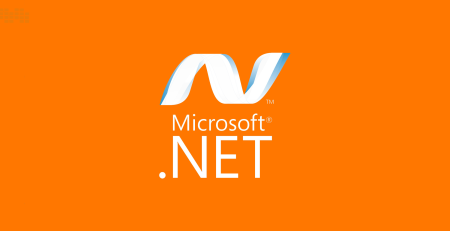

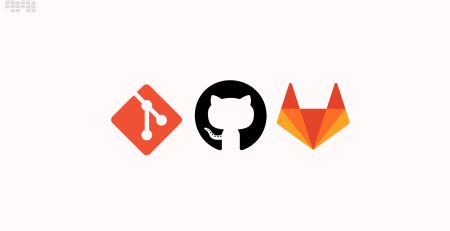

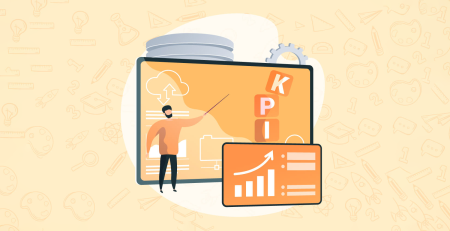
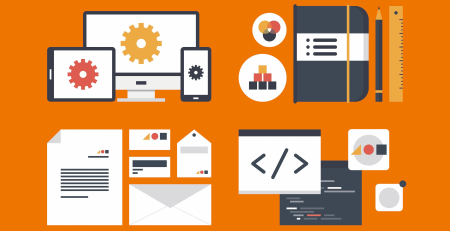
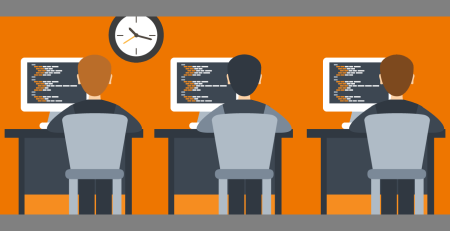
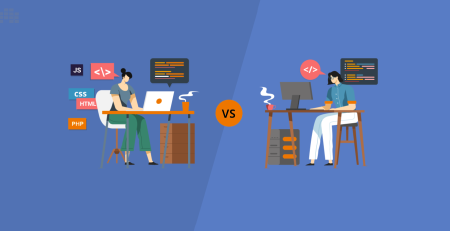


Leave a Reply